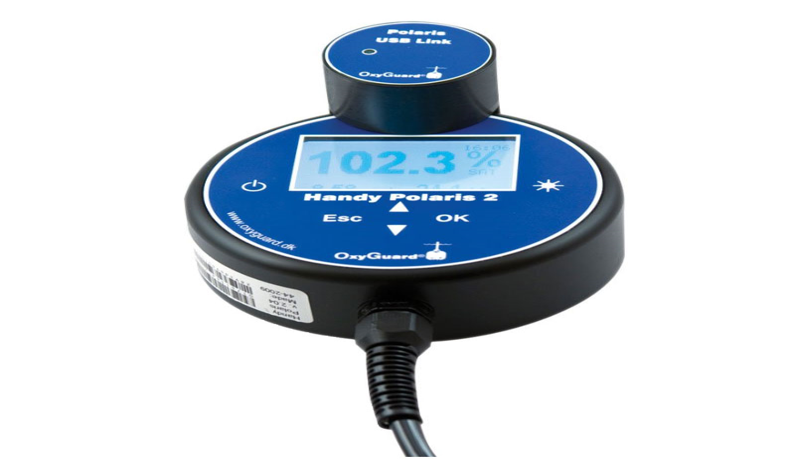Recirculating Aquaculture Breeding – Step Six
Oxygen delivery:
The aeration process, which is the physical process of discharge, will add a little oxygen to the water by simply exchanging between the gases in the water and the gases in the air, depending on the level of oxygen saturation in the water. The oxygen balance in the water is 100% saturated. When the water passes through the fish tanks, the oxygen content is reduced to 70% and its content will decrease. Usage of this water typically results in a saturation of up to 90%, with some systems achieving more than 100% oxygen.
In these images, you see oxygen tanks for dissolving pure oxygen at high pressure and a sensor to measure the oxygen concentration in the water. However, dissolved oxygen of up to 100% in inlet water is preferred to fish ponds in order to have sufficient oxygen for rapid and sustained growth
Pure oxygen is often delivered in the form of liquid oxygen in the fish pond, but can be produced in the field with an oxygen generator. There are several ways to create saturated water with a dissolved oxygen content of 200-300%. Usually high pressure oxygen cone systems or low oxygen systems such as oxygen are used from the bed or in-depth. The same is true. Water and pure oxygen are pressurized where oxygen enters the water. At the oxygen cone, pressure is applied by a high pressure pump from the top of the dissolved oxygen mixing reactor. It is typically performed about 1.4 times in the cone. Water under pressure inside the oxygen cone consumes a lot of energy. In oxygen, the pressure is much lower, usually decreasing by about 0.1 bar, and water enters the box only through the combination of water and oxygen. The difference between these two systems is that the oxygen cone uses only part of the water for oxygen.
As you can see in the pictures, dissolved oxygen to dissolve pure oxygen at low pressure while pumping water into the field. The system typically increases the dissolved oxygen level to more than 100% when it enters fish tanks depending on the flow rate and field design.
Whatever method is used, the process should be controlled with the help of oxygen measurement. The best way to do this is to have a probe or oxygen meter to measure the amount of dissolved oxygen in the system at normal air pressure, for example in the control room the amount of oxygen provided by the supplier may vary with the amount of dissolved oxygen in the water in the crop. To make sure that the measurement is carefully monitored, make sure the probe or oxygen meter is clean and calibrated.
Behruz Alinia Fard
Fisheries Analyst and Complicator



